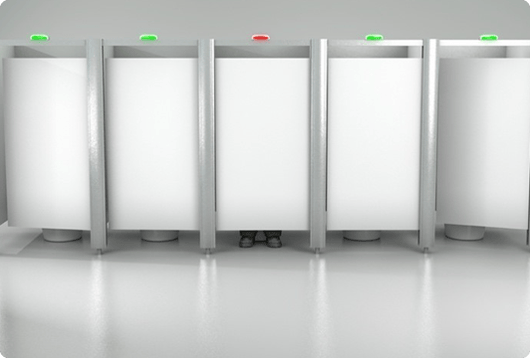It's no secret that the line for the women's restroom is usually longer than the men’s line. This is especially true after big events or during “rush” hours like lunch-time. Research points to a few specific reasons why this is the case, and thankfully, facilities are making changes in their restrooms to help solve this problem.
Why are the lines longer in the Women’s Restroom?
Researchers at Ghent University took a look into the factors that make women’s restroom lines longer. A few basic details prevailed in this research. Overwhelmingly, there are less accommodations for women in these areas. While the physical space for both sexes is generally about the same, men’s rooms have stalls and urinals while women’s rooms just have restroom stalls. Urinals take up less space than stalls. This means that the women’s restroom has 20-30% less actual toilets than a comparable sized men's room. Based on this, it is obvious that given the same amount of traffic, there just isn’t the same amount of capacity. Another factor is the amount of time that women spend in the restroom. Women generally have more clothes to remove, spend more time in front of the mirror, and chit chat more with fellow restroom goers researchers found. Factor in these reasons, and add in the time crunch of a “rush” period, and ladies will have to wait in longer lines.

What is being done to help this restroom stall traffic?
Women have very few options available to avoid long lines in a restroom. One method of getting in and out of the restroom more quickly is to choose the right restroom stall. Research shows that the location of certain stalls determines how frequently they are used. Choosing to wait for a lesser used stall can decrease time spent in the restroom as well as improve the chances of choosing a cleaner stall.
One big push among facilities is to convert to uni-sex restrooms. Men generally use stalls less frequently than women. Having access to more available restroom stalls can drastically decrease time spent waiting in lines. Men may not be used to the new longer lines, but the overall consensus is that this approach reduces the overall wait time in restrooms for men and women.
A more recent development in large facilities is the implementation of devices that alert restroom goers to vacant stalls. Many times man and women will stand in line waiting for a stall to become vacant when in actuality the door is closed but the stall is unoccupied. These devices keep traffic moving to the available stalls thereby reducing unnecessary lines.

Until all facilities adopt the uni-sex approach and utilize technology to help their guests, there will always be longer lines for the ladies room, but as we progress there is hope on the horizon.
To Learn About More Restroom Innovations Click Below




Enjoy this blog? Leave a comment or ask a question!